توسعه بناهای قدیمی، یکی از چالشهاییه که پیش روی اکثر شهرهای بزرگ و سابقه داره.
برخی بناهای قدیمی رو شایسته تخریب می دونن و اون ها رو از کار افتاده و دوران گذشته می خونن و برخی دیگه برعکس اون ها رو شایسته ارج و نگهداشت فرض میکنن. و البته هر دو گروه هم در برخورد با برخی بناها که خب سن و سالی ازشون گذشته و ثبت های میراثی شدند، خاضع تر برخورد می کنن و علاقه مند نگهداشت و زندهسازی مجدد اون ها هستند.
یکی از گونه بناهایی که معمولا در سال های اخیر نیاز به توسعه و زندهسازی شون در همه جای دنیا حس شده ایستگاه ها و پایانه های حمل و نقل قرن اخیر هستند. با ورود خودرو به زندگی بشری در سده اخیر، خیلی چیزها در زندگی مردم عوض شد. این ایستگاه ها و پایانه ها هم مربوط به همین دورانن و این روزها کم کم دیگه احساس می شه نمی تونن جوابگوی نیازهای جدید باشن و باید فکری به حالشون کرد. گاهی رخ داده که تخریب شدند و به جاشون چیزی جدید ساخته شده و گاهی هم به کل تغییر کاربردی داده شدن و در نزدیکی شون مجموعه ای جدید ایجاد شده. و اگرچه هر دوی این راهکارها معمولا با توجه به محاسبات مالی دقیق رخ می ده اما یه جورایی آدم احساس می کنه اسرافه! :) یعنی یه بی مهری حتی! نسبت به چیزی که سالیان دراز همراهی کرده با خوب و بد بشر....
اما در راهکارهای عاقلانه تر توسعه و نوسازی این بناها مطرحه که هم نگه می داره وضعیت قبلی و خاطره های اجتماعی رو و هم به کاربری های جدید پاسخ می ده.
نکته مهم در این گونه توسعه ها توانایی در برقراری ارتباط میون وضعیت قبل و بعد بناست به طوری که مثلا رشد فناوری های سریع این سالها مانع برقراری ارتباط نشه.
یک نمونه خوب از توسعه این گونه بناهای قدیمی که با وجود برخورداری از آخرین فناوریهای ساختی خیلی خوب تونسته رابطه مورد نظر رو برقرار کنه و به کالبدی نو و پاسخگو برسه توسعه و بازسازی ایستگاه کینگزکراس لندنه.
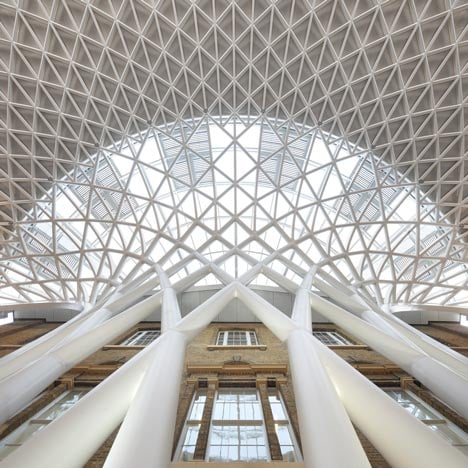
A semi-circular vaulted concourse designed by British architects John McAslan + Partners will open at King’s Cross Station in London next week.
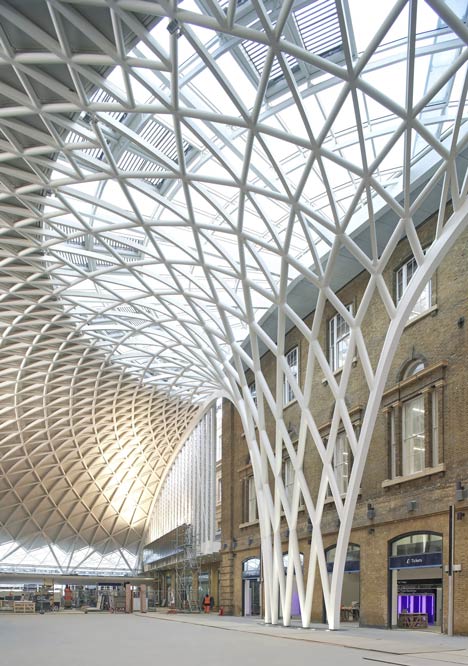
The architects, who have been progressing a masterplan for the railway station since 1998, have fully restored the five buildings that comprise the western elevation to serve as a backdrop to the new glazed entrance hall.
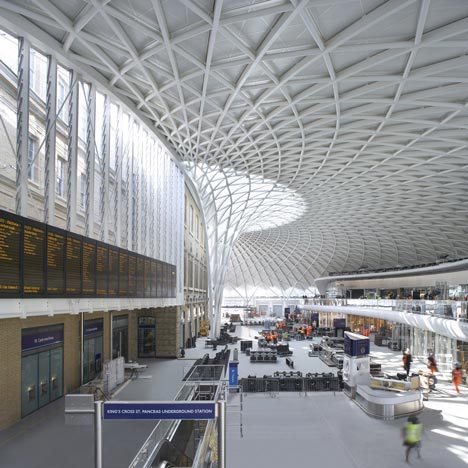
The criss-crossing steel structure unfurls like a tree from columns in front of this elevation and folds down around the space.
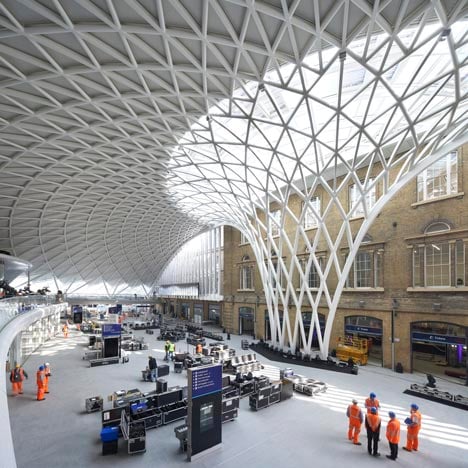
Departing passengers will be able to access the eight existing platforms in the main train shed, as well as one new one, directly through the new two-storey hall instead of beneath the temporary canopy currently in front of the building.
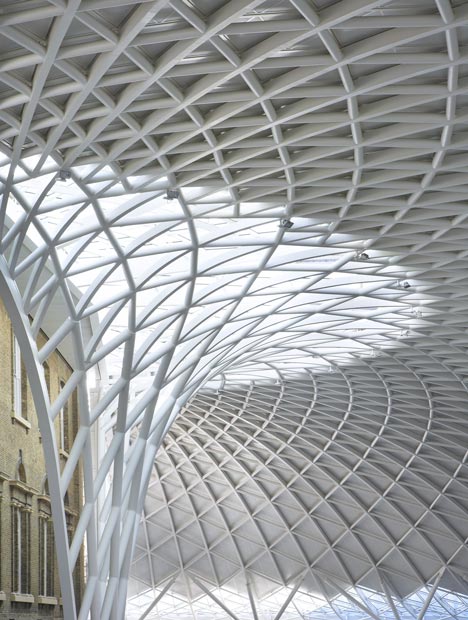
The architects plan to remove this structure during the next phases of construction to create a new public square.
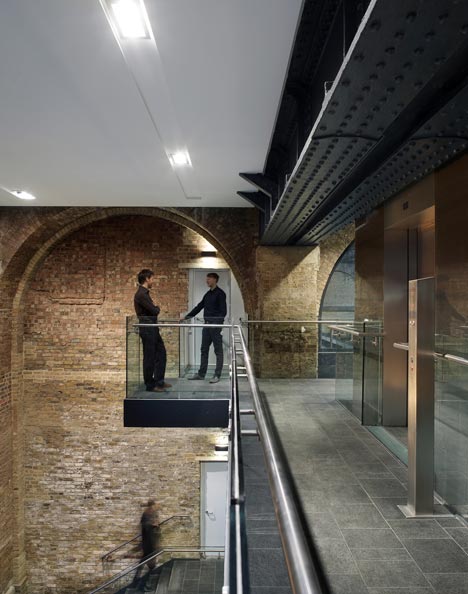
John McAslan was awarded an OBE for services to architecture at the start of this year.
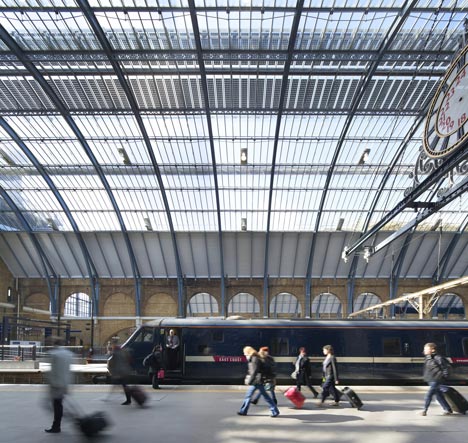
Other railway stations we’ve featured on Dezeen include Bijlmer Station in Amsterdam and Rossio Station in Lisbon - see them both and more here.
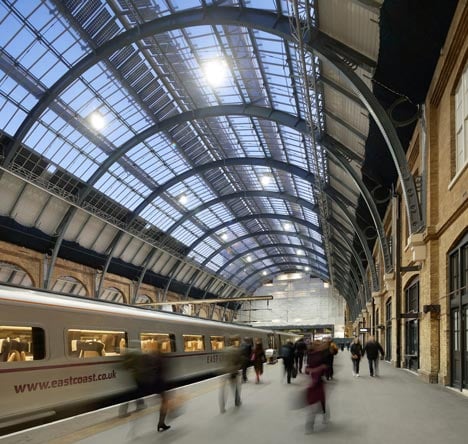
Photography is by Hufton + Crow, apart from where otherwise stated.
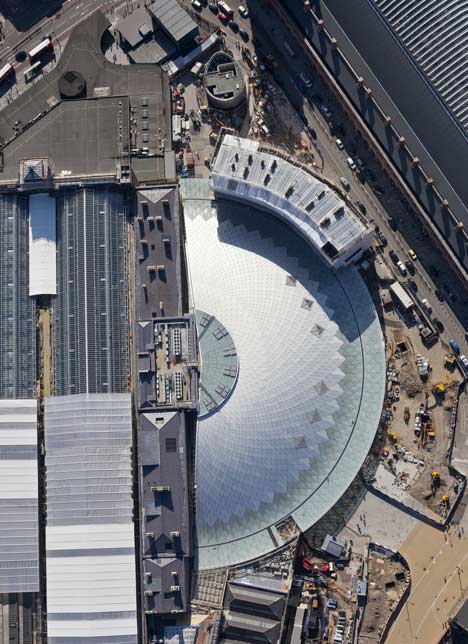
Above: photograph is by John Sturrock
Here’s some more information from John McAslan + Partners:
TRANSFORMING KING’S CROSS – LONDON’S HISTORIC STATION ACQUIRES A CONTEMPORARY TWIST
The new Western Concourse at King’s Cross opens to the public on Monday 19th March 2012.
“The transformation of King’s Cross station by John McAslan + Partners represents a compelling piece of place-making for London. The show-piece is clearly the Western Concourse – Europe’s largest single span station structure and the heart of the development, but the overall project is far more complex: an extraordinary, collaborative effort that has delivered an internationally significant transport interchange, fit for the 21st century and beyond.
We are very proud of our role as lead architects and master-planners of the King’s Cross redevelopment, and it’s immensely satisfying to see the project delivered on time, ready for the capital’s celebration of the London Olympics later this year.” John McAslan, Chairman John McAslan + Partners
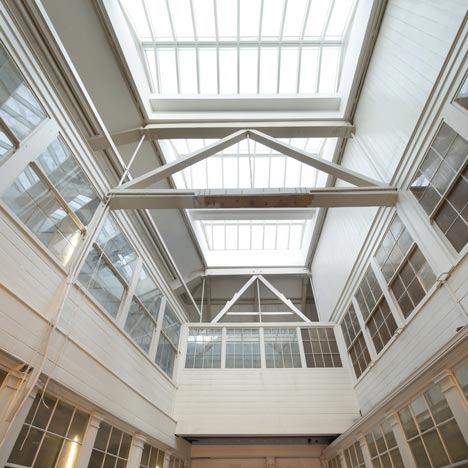
With this multi-phased development now complete, the significance of the King’s Cross Station redevelopment is finally revealed. The transformation of King’s Cross Station for Network Rail involves three very different styles of architecture: re-use, restoration and new build. The train shed and range buildings have been adapted and re-used, the station’s previously obscured Grade I listed façade is being precisely restored, and a new, highly expressive Western Concourse has been designed as a centrepiece and the ‘beating heart’ of the project. When the station opens to the public next Monday, 19 March, King’s Cross will become a new, iconic architectural gateway to the city, ready for the 2012 London Olympics.
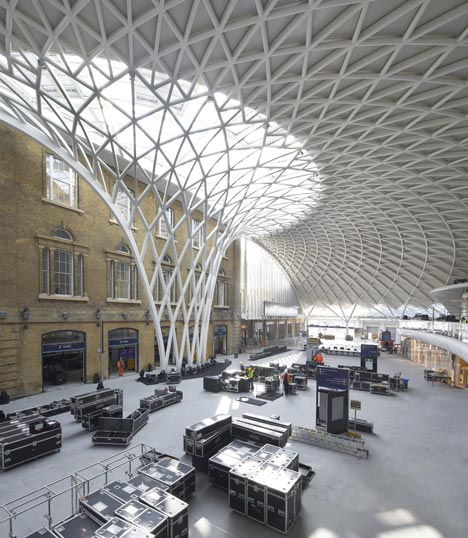
John McAslan + Partners began work on the project in 1998 and established the overall master-plan for the development in 2005. As a result the practice has played a key role in the wider transformation of the King’s Cross area – infrastructural, social and commercial changes that now connect the station with the massive King’s Cross Central scheme north of the station as well as to St Pancras, the London Underground, and the surrounding urban context. The architectural ambition of JMP’s scheme has been to create a new iconic landmark that will function as a key catalyst for the ongoing regeneration of this new London quarter as well as providing striking new facilities that will accommodate the 50 million passengers now passing through the station each year.
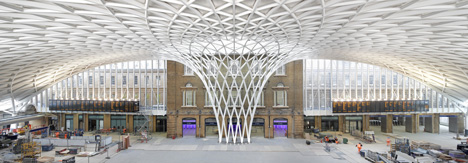
WESTERN CONCOURSE
The centrepiece of the £547m redevelopment is the new vaulted, semi-circular concourse to the west of the existing station. The concourse rises some 20m and spans the full 150m-length of the existing Grade I Listed Western Range, creating a new entrance to the station through the south end of the structure and at mezzanine level to the northern end of the Western Concourse.
The 7,500sqm concourse has become Europe’s largest single-span station structure, comprising of 16 steel tree form columns that radiate from an expressive, tapered central funnel. The graceful circularity of the concourse echoes the form of the neighbouring Great Northern Hotel, with the ground floor of the hotel providing access to the concourse. The Western Concourse sits adjacent to the façade of the Western Range, clearly revealing the restored brickwork and masonry of the original station. From this dramatic interior space, passengers access the platforms either through the ground level gate-lines in the Ticket Hall via the Western Range building, or by using the mezzanine level gate-line, which leads onto the new cross–platform footbridge.
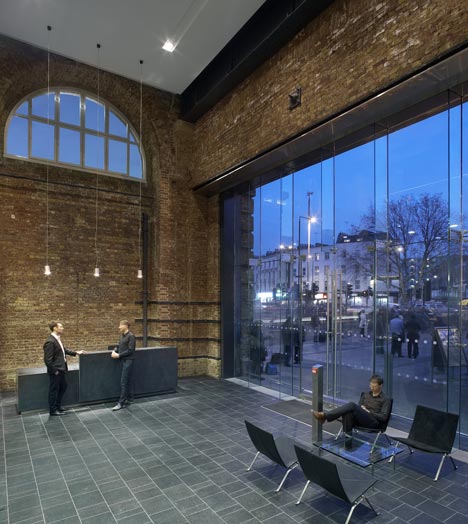
Located above the new London Underground northern ticketing hall, and with retail elements at mezzanine level, the concourse will transform passenger facilities, whilst also enhancing links to the London Underground, and bus, taxi and train connections at St Pancras. The concourse is set to become an architectural gateway to the King’s Cross Central mixed-use developments, a key approach to the eastern entrance of St Pancras International. It will also act as an extension to King’s Cross Square, a new plaza that will be formed between the station’s southern façade and Euston Road.
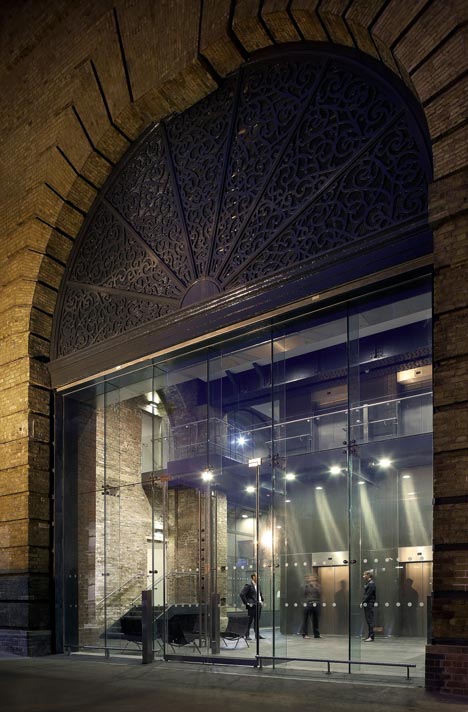
WESTERN RANGE
The Western Range at King’s Cross is the historic station’s biggest component, accommodating a wide range of uses. Complex in plan, and articulated in five buildings, the practice’s considered architectural intervention has delivered greatly improved working conditions for the station staff, train-operating companies and Network Rail management teams. The Northern Wing, destroyed by bombing in World War II, has been rebuilt to its original design. The reinstatement of the Western Range also delivers key gated connections, including a new gate-line at the southern end, now the main point of connection between the Western Concourse and the platforms of the Main Train Shed.
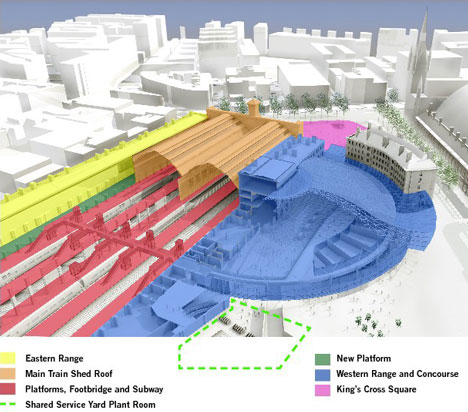
MAIN TRAIN SHED
The station’s Main Train Shed is 250m long, 22m high and 65m wide, spanning eight platforms. The restoration includes revealing the bold architecture of the original south façade, re-glazing the north and south gables and refurbishing platforms The two barrel-vaulted roofs are currently being refurbished and lined with energy-saving photo- voltaic arrays along the linear roof lanterns, while a new glass footbridge designed by JMP extends across the Main Train Shed, replacing the old mid-shed Handyside bridge and giving access to every platform as well as the mezzanine level of the concourse.

Click above for larger image
JMP’s design integrates the main and suburban train sheds for the first time, creating a completely coherent ground- plan for passenger movements into and through the station. Improvements to the Suburban Train Shed located to the north of the Western Concourse and Western Range buildings have enhanced the operation of its three platforms (the busiest in the station during peak-hours).

Click above for larger image
The ambitious transformation of the station creates a remarkable dialogue between Cubitt’s original station and 21st- century architecture – a quantum shift in strategic infrastructure design in the UK. This relationship between old and new creates a modern transport super-hub at King’s Cross, whilst revitalising and unveiling one of the great railway monuments of Britain.





















